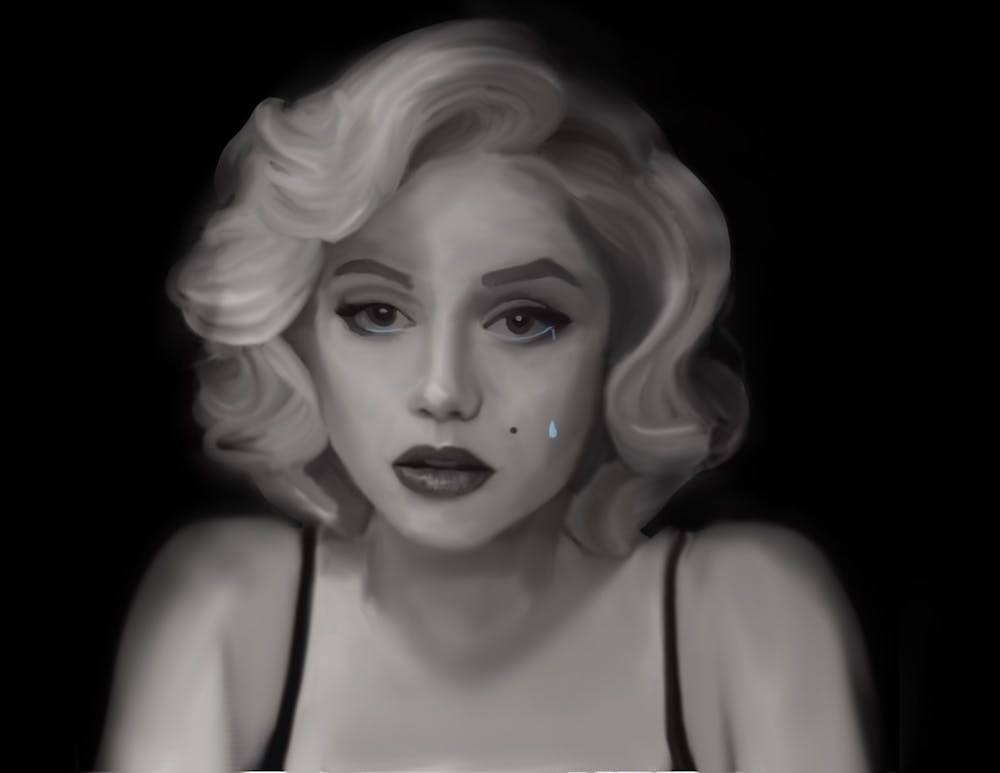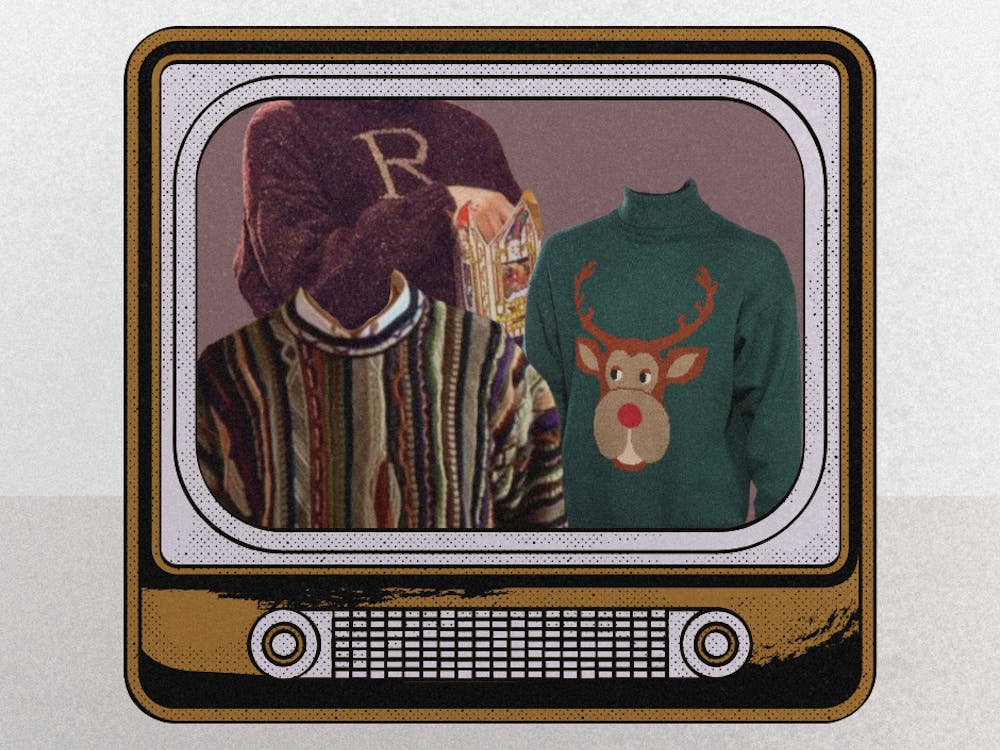This article contains mild spoilers for “Blonde.”
A young Norma Jeane, played by a poised and heartbreaking Lily Fisher, lives with her mentally disturbed mother Gladys, played by Julianne Nicholson. For her seventh birthday, Norma’s mother gifts her a faded photograph of a man she claims to be her father. As the camera zooms into the framed picture, the audience comes to an immediate understanding of Norma’s central childhood trauma — the lack of a father figure.
Written and directed by Andrew Dominik and based on the fictional biographical novel of the same name by Joyce Carol Oates, Netflix biopic “Blonde” follows Norma Jeane’s rise to fame after a scarring childhood, her abusive relationships as well as her catastrophic spiral and tragic demise. In Norma’s adult life, where she is played by Ana de Armas, she has taken on the stage name many will come to know her by — Marilyn Monroe.
While the film touches on a series of actual events — from Monroe’s filmography to her marriages — it also takes creative liberties in its interpretation of the actress and her life. Many of the plot points and personal life events depicted in the movie are completely speculative or fiction.
“Blonde” is a breathtakingly aesthetic film. The craftsmanship on cinematic display is technically impeccable and mesmerizing — giving the movie a dream-like state and surreal nature in addition to its impressive recreations of iconic visuals synonymous with Monroe’s career. Use of out-of-focus shots, experimentation with different aspect ratios, seamless shifts between color and black and white imagery, archival footage and random narration blur the lines between reality and fiction.
The stylistic approach effectively creates a picture of fame that increasingly becomes a hellscape, making it more exciting to unwrap than the typical Hollywood biopic — which often feel like a highlight reel of a celebrity’s life depicted in formulaic fashion. However, even the visually stunning cinematography becomes difficult to watch as the lurid and sick display simply becomes too much.
Scenes such as a point-of-view shot from within Monroe’s vagina as she has a forced abortion performed on her and an extreme close-up of a drugged Monroe fellating President Kennedy, played by Caspar Phillipson, as he is watching television not only feel overdone, but also gratuitous for gratuity’s sake. It is such graphic and often tasteless scenes — warranting “Blonde” its NC-17 rating and status as the first NC-17 rated film to be released via streaming service — that will leave audiences wondering why the movie’s narrative of explicit brutality was necessary to its storytelling.
Beyond the stylistic elements of the film, another noteworthy feature is de Armas’ captivating performance. Aided by exquisite work done by the hair, makeup and costume department, de Armas’ immersion into the role and portrayal of one of the most famous icons in entertainment history makes “Blonde” entirely her show. The occasional slip of her Cuban accent is made forgivable, maybe even forgettable, by her ability to gracefully take full control of the screen. When she tells DiMaggio, played by Bobby Cannavale, “I’ve been happy all my life” in Monroe’s honeyed voice, the lie is as unconvincing as it is heartbreaking.
With de Armas giving every scene her all, it is difficult not to wish for the part to have delved beyond crying and nudity — to dig deeper than the cliches associated with Monroe in pop culture that are all too bleakly familiar. This problem lies largely in the film’s writing. “Blonde” is meant to be a character study of Monroe, but fails to acknowledge her personality and intelligence, reputation amongst those around her as charismatic and comedic, her interest in politics and civil rights advocacy and the true depth of her professional ambitions and tenacity.
Rather, the largest recurring theme in the movie is disappointingly of Monroe yearning for the father she never had, seeking to fill the role with the famous men she refers to as “daddy” who pursue, wed and eventually exploit her. In nearly every situation, Monroe is written as a one-dimensional pawn for male schemes — a fragile angel unable to defend herself in her search for a father figure to love and protect her.
In his own argument, however, writer and director Dominik becomes complicit. While the relentless suffering and cruelty is not a fresh take or a wrong one, “Blonde” feels like both a criticism of the brutality Monroe endured and an exploitation of it. His exploration of the idea of Monroe feels overtly sexualized and dehumanizing.
Too much of “Blonde” is about men chewing Monroe up and spitting her back out — reducing her to a victim with daddy issues portrayed through a very male gaze that is at no point comfortable or justified. By the end of its 166 minute runtime, it is clear that “Blonde” has painted the very portrait of Monroe that it is trying to condemn, and the film's artistic merits burn out long before its credits ever roll.







